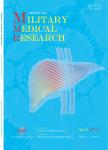Association of iodized salt with goiter prevalence in Chinese populations: a continuity analysis over time
Association of iodized salt with goiter prevalence in Chinese populations: a continuity analysis over time作者机构:Department of Military Medical Geography College of High Altitude Military Medicine Third Military Medical University Battalion 5 of Cadet Brigade Third Military Medical University Key Laboratory of High Altitude Medicine of PLA Third Military Medical University
出 版 物:《Military Medical Research》 (军事医学研究(英文版))
年 卷 期:2017年第4卷第3期
页 面:149-156页
核心收录:
学科分类:1002[医学-临床医学] 100201[医学-内科学(含:心血管病、血液病、呼吸系病、消化系病、内分泌与代谢病、肾病、风湿病、传染病)] 10[医学]
基 金:supported by the National Natural Science Foundation of China(No.81372125)
主 题:Iodine deficiency disorders(IDD) Iodized salt China
摘 要:Background: Iodine deficiency disorders(IDD) refer to diseases that are caused by insufficient iodine intake, and the best strategy to prevent IDD is the addition of iodine to dietary salt. Because iodine deficiency is a common cause of goiter, the prevalence as effectively controlled after the implementation of universal salt iodization(USI) in China. However, there is substantial controversy as to whether the incidence of thyroid disorders is related to iodized salt intake. Therefore, we aimed to clarify whether the risk of goiter can be promoted by ***: A longitudinal continuous study based on the national monitoring results of IDD in China was performed for 3 consecutive years. We recorded the following indicators of IDD from 31 provinces: goiter number, two degrees of goiter(the degree of goiter severity) and cretinism(three endemic diseases), iodized salt intake, median urinary iodine concentration(UIC), soil iodine content and coverage rates of iodized salt. One-way Analysis of Variance(ANOVA) and linear regression analyses examined the differences between the three groups and correlations, respectively. Data were collected from the Chinese national IDD surveillance data in 2011-2013, and the background values of Chinese soil elements were published in ***: A reference male s daily intake of maximum iodine was 378.9μg, 379.2μg and 366.9μg in 2011, 2012, and 2013, respectively. No statistical association between daily iodized salt intake and the three endemic diseases was observed in 2011-2013(P 0.05). No association was observed between daily iodized salt intake and the UIC of children in 2011(P0.05). Linear regression revealed no significant correlation between the soil iodine content and three endemic diseases. The present study indicated no difference in the daily iodized salt intake in each province during three years(F=0.886, P=0.647). The coverage rate of iodized salt remained above 98.7%, and goiter rates were stable in ***



